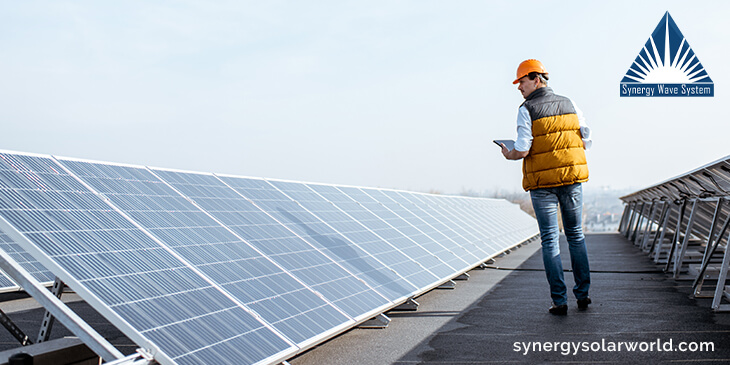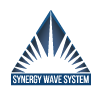Synergy Wave System

LATEST IN SOLAR TECHNOLOGICAL DEVELOPMENTS 2022
LATEST IN SOLAR TECHNOLOGICAL DEVELOPMENTS 2022
Renewable energy capacity is set to expand 50% between 2019 and 2024, led by solar energy. This is according to The International Energy Agency (IEA)s ‘Renewable 2020 report’ which found that solar, wind and hydropower projects are rolling out at their fastest rate in four years, making for the argument that the future lies in using renewable energy. As per the prediction goes, solar will become 35% cheaper by 2024. With a target of generating an additional 40GW of solar power by 2030, the growth aspects of the solar industry worldwide are strong. Thinking of Solar Panel installations in Gurgaon, think Synergy Wave System.
There are many solar epc companies in India, but when it comes to highest success stories, always go for the one with highest track record of successful installations like SYNERGY. Solar facilities will continue reducing their variability rates by storing electricity in the day and running at night. However, advanced solar plants will operate on higher DC to AC ratios, meaning they’ll deliver more consistent service for longer durations. Closing the gap between the sunlight collection and electricity generation will spur residents and corporations to join the solar movement.
It goes without mentioning that solar technology will keep getting better with time. The previous decade has seen huge advancements in developing solar technology and the same is expected in the future. The cost of solar power generation has gone down by 82% since 2010. And as per projections, the market for solar power has a positive growth trajectory beyond 2022. Just like any other industry, solar industry has experienced an enviable growth rate that promises a viable future as well. Listed below are the latest developments in solar technology to provide a clear picture of the technological expansion. To become the best solar company in India, one needs to put in extra effort and time in R&D and investment in their innovations team to come out with a viable invention.
NEW ADVANCEMENTS IN SOLAR TECHNOLOGY
• GREEN HYDROGEN TECHNOLOGY
2021 saw a major hike in entities getting interested in green hydrogen, a concept that has sparked interest of many companies across the world. The aim of these Hydrogen production sites is to accelerate the decarbonization of industrial business & its electrolysis technology infers that it can produce green hydrogen from any source of water, impressively including saltwater as well.
• EFFICIENCY BOOST
In regards to look for maximizing PV panel efficiencies, solar cell & module developers have developed a bifacial silicon solar cell with an efficiency of 24.3% on the front and 23.4% on the rear, for an effective output of around 29%.
• THIN-FILM TECHNOLOGIES
Thin-film PV panels have come to the forefront, leaving the crystalline silicon panels in the dump and resulting in an expanded production in the market for the same.
• AGRIVOLTAICS
Maximizing the use of agricultural land by installing solar panels over crops is a small yet growing segment of the solar market. This would definitely enable the farms to become self-sustaining and the shading from solar panels can increase crop yields and decrease water consumption by reducing evaporation.
• PANEL COATING
This latest technology is all about using hexagonal lenses in the protective glass that coats solar panels to concentrate light and produce more energy. It has reached an efficiency of 30% which translates to 40% more earnings for solar developers.
• SMARTWIRE
This technology applies layers of thin-film silicon on both sides of a silicon solar cell which increases the light conversion and brings in the efficiency of the silicon cell up to 25%. This technology is not that new but the expiration of patents is allowing more manufacturers to start developing it with increased efficiencies & deployments are expected to grow over the coming years.
• FLOATING SOLAR FARMS
Large installations of floating photovoltaic panels generate high volumes of electricity at a lower cost than land-based solar farms. Also, they’ve the advantage of not using land or requiring installation on buildings. Research shows that cooling effect of the surrounding water allows floating panels to produce up to 10% more electricity and slows module degradation. Floating PV systems are faster to install as against the land-based installations, also improves water quality.
• BUILDING-INTEGRATED PHOTOVOLTAICS
These PV extends beyond rooftop-mounted solar panels to incorporate PV properties into the building materials themselves. This means roof tiles, window glass, facades and shades, all generate electricity, seamlessly blending into the building design & reducing energy consumption by air-conditioners.
• SOLAR CELL FABRICS
We’re seeing even more developments such as high-efficiency III-V materials that can be used on car rooftops and solar fabrics that can be used in household furnishings and clothing. With new technologies driving the efficiency of solar deployments and carbon emissions targets providing an impetus for the growth in renewables, SYNERGY WAVE SYSTEM can definitely help your business with designing and optimizing PV installations.
Renewable energy will continue to rise in the upcoming decade, edging out fossil fuels and reducing greenhouse gas emissions. Technologies such as solar and wind are at the heart of transformations taking place across the global energy system. Their increasing deployment is critical for efforts to tackle greenhouse gas emissions, reduce air pollution & expand energy access.
